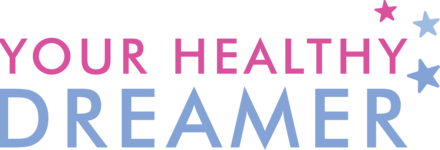Newborn Sleep: 2-4 Months
Is your baby smiling yet in response to your loving face? This typically happens between 6-8 weeks, measuring from their estimated due date.
If you’re not seeing those smiles yet, your baby is still in the earlier newborn phase. Read my blog, ‘Newborn Sleep: 0-2 Months’ to learn more about how to support them in healthy sleep now.
Now if you are seeing the emergence of those social smiles, then a big congratulations to you! This is your best sign that they are now capable of making simple connections! Basically, they are getting very smart very fast and it’s officially appropriate to start offering them simple connections that will serve them in regards to sleep.
While they are still a couple months away from the possibility of sleeping through the night or a predictable nap schedule, there are some very exciting developmental changes taking place that make it possible to finally start building a healthy sleep foundation for our babies.
Their own natural body clocks are far from fully functioning, but night sleep is beginning to come together, meaning that they will naturally begin to sleep in one longer stretch of night sleep, typically between 4-6 hours. In addition to their new skill of making simple connections, there are quite a few modifications that are worth considering to facilitate healthy sleep habits.
Before getting into all of the best ways to start building a healthy sleep foundation for your baby, the most important thing to note is that it’s never too late to start teaching healthy sleep habits.
If you read through this list and you feel more anxious than hopeful and excited, then keep doing what you’re doing guilt-free, and refer back when you’re ready to prioritize sleep. Or dip your toe into some of the tips and tricks and progress at your own pace.
If you are feeling excited and hopeful about learning the top 5 evidence based, age appropriate, and effective ways to start building a healthy sleep foundation for your baby at this age, read on!
Top 5 Sleep Tips Your Smiley Baby is Ready for Now:
ONE: The Sleep Environment
It’s time to start offering sleep in one consistent safe sleep location. For example, a crib or pack n play that you put them down for sleep at night and during all naps. Start moving away from regular motion sleep as it can hinder their ability to fall into the deepest phases of sleep, and will make the ultimate transition to the crib that much harder.
It’s helpful to offer a sleep environment that is Totally Conducive to Sleep. This means making the sleep environment dark dark dark for all day and night sleep. Start looking into your favorite methods for blacking out windows and invest in a continuous white noise machine for blocking out ambient house or neighborhood noises. Keep the sleep environment relatively cool, somewhere between 68-72 degrees being ideal for baby sleep.
Ensuring your placing your baby in a safe sleep environment is as important as ever. This means flat and bare with a properly fitted sheet and free from bumpers, blankets, cushions, or inclines. Place your baby on their back for all sleep till age 1, and know that it’s time to remove the swaddle for good once they start to roll. If they roll onto their belly independently, it is safe to leave them there. If they struggle on their belly, you can assist in rolling them back and offer plenty of floor practice during the day so they can practice and master these new skills.
TWO: The Bedtime Routine
Now that your baby is starting to connect the dots, it’s the perfect time to offer helpful connections around sleep! A Bedtime Routine is a 10-15 minute routine consisting of simple, necessary, and soothing steps that are performed in the same order every single time. The purpose is for your baby to recognize that their caregiver does A,B, C, D, and then E comes next, every single time because that’s what always happens. E, of course, is being lovingly placed in their safe sleep space for sleep. It’s a much smoother transition when your baby knows what to expect, and they learn this through your diligent consistency. It’s helpful to use an abbreviated version of your bedtime routine before every single sleep period, or at least most of the time.
THREE: The Bedtime
Your baby’s ideal bedtime sleep window naturally starts to shift earlier around this time as well. Coinciding nicely with your new goal of implementing a consistent bedtime routine, the actual bedtime should be shifting much earlier. Babies thrive on an early to bed and early to rise schedule, and are typically requiring 11-12 hours of sleep per night. Aim to finish your baby’s bedtime routine between 6-8pm.
The most restorative sleep your baby will have is in the hours before midnight, and this is likely where you will see that longer stretch of night sleep.
FOUR: The Wake Windows
To know roughly when in that range bedtime should actually fall for your baby, and to minimize the risk for over tiredness throughout the day, it’s helpful to keep short wake windows.
Babies get overstimulated and overtired simply by being awake for too long. An overtired baby will actually have more difficulty leaning into sleep, whereas a baby who sleeps more frequently after short periods of wakefulness will have an easier time falling asleep at the next sleep period.
Of course there’s going to be trial and error and exact timing will change, but it’s helpful to keep a loose sense of how long your baby has been awake, and to aim for them to stay awake for no more than 45 minutes at a time, gradually progressing to closer to 2 hours by 4 months.
Some babies will fall asleep on their own after much shorter wake windows, but if your baby is not showing signs of falling asleep on their own, and it’s already been an hour, then it’s recommended to start offering sleep by bringing them to their safe, consistent, and conducive sleep environment, and initiating your predictable nap routine.
Remember that nap length will be highly variable till closer to 4 months biological age, and this is normal and expected.
FIVE: The Independent Sleep Practice
This is the most impactful way you can begin to build a healthy sleep foundation, and everything else reviewed will make learning this skill as easy as possible.
This is the perfect time to start offering your baby opportunities to Practice Putting Themselves to Sleep after your predictable bedtime routine ends and they are awake, calm, and ever so lovingly placed in their safe, consistent, and conducive sleep environment.
The best part of ending the bedtime routine with your baby still awake, and giving them the opportunity to practice is – partly that they might surprise you and do a really good job – but mostly that the stakes are very very low.
It’s 100% OK if they struggle to fall asleep independently, and you then decide to soothe them to sleep in your usual fashion instead. You can shake it off, give yourself and your baby grace, and practice again at the next sleep period – or the next day, or the next week if it feels more stressful than hopeful.
You might allow your baby time to practice falling asleep independently just once or twice a day. The important thing here is to simply start allowing some independent sleep practice.
Your newborn is getting older, and smarter, and is becoming capable of making connections and lengthening night sleep. Safety is your first priority in regards to sleep, but it is also appropriate now to start building a healthy sleep foundation in the above reviewed ways if sleep is a priority in your family.
If your baby is nearing the end of this phase and the four month sleep transition is on the horizon, don’t let it catch you unprepared. Read all about how to maximize on this Exciting Sleep Transition coming soon!
And as always, if you prefer to wait on prioritizing sleep till the time is right for your family, that’s OK too! It’s never too late to teach healthy sleep habits 🙂

